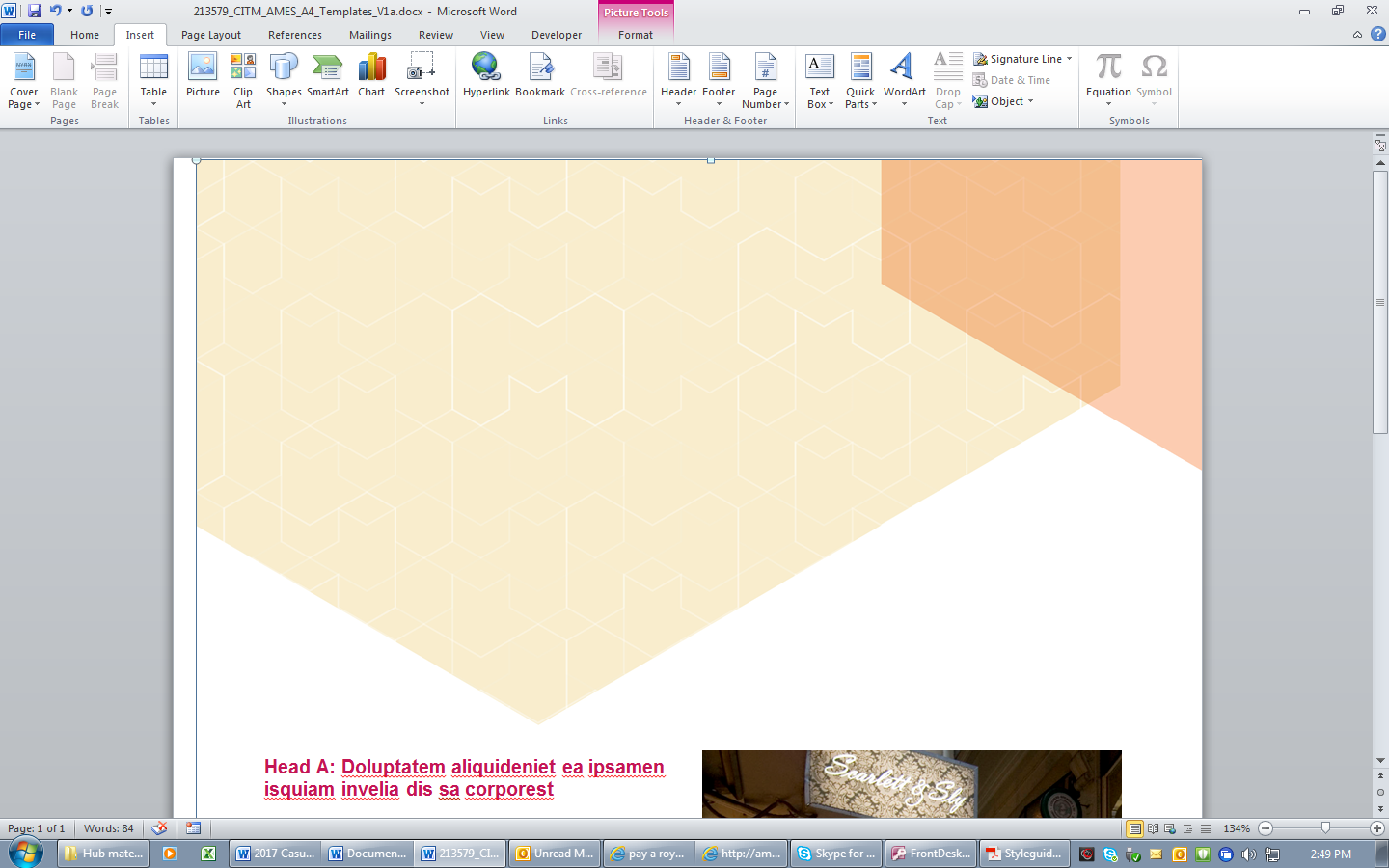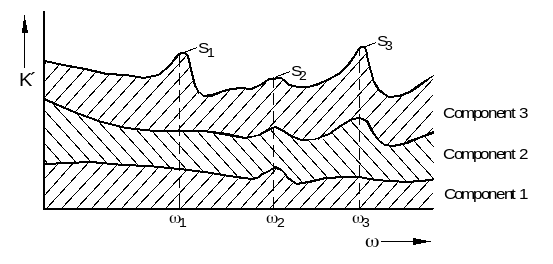dental trauma - the child patient and parent perspective a. wallace, h. d. rodd, h. zaitoun department of paediatric dentistry, wellesley
Dental trauma - the child patient and parent perspective
A. Wallace, H. D. Rodd, H. Zaitoun
Department of Paediatric Dentistry, Wellesley Road, Charles Clifford
Dental Hospital, Sheffield
September 2013
Introduction
Children commonly traumatise their permanent front (incisor) teeth,
with reported injury in up to 13% of British 15-year-olds. In about 6%
of cases the nerve inside the tooth will die following this injury and
will require root canal treatment. To ensure success, this root
filling needs to be packed against a hard barrier at the end of the
root of the tooth. However, in young patients, the roots are not fully
formed and the barrier is absent. Hence, before a root filling can be
placed in an immature tooth, the roots have to be artificially matured
to stimulate the formation of a barrier using a material called
calcium hydroxide. This paste is put inside the root canal and sealed
into the tooth. On average, this treatment takes 12 months over at
least 7 dental visits. Alternatively an artificial barrier can be
placed in the canal using newer materials such as mineral trioxide
aggregate (MTA), or Biodentine. This material is pushed to the end of
the root where it sets hard and forms an artificial barrier against
which a root filling can be placed. This requires an average of only 2
visits over a period of 1 to 2 months. To date, only MTA has been
evaluated in a randomised controlled clinical trial (RCT), the
benefits of which have been reported solely in terms of clinical
outcomes rather than patient reported outcomes (Chala et al., 2011).
The benefits of the newer material are yet to be established. The
first major advantage of Biodentine over MTA is its significantly
reduced cost which has economic benefit for the NHS and it provides a
more cost effective option for use in general dental practice or the
salaried services.
The second potential advantage of Biodentine is the absence of tooth
discolouration following treatment. Tooth discolouration is a common
adverse effect of dental trauma which can be potentiated by use of
materials including MTA (Roberts et al., 2007). In instances where
this has occurred, patients express great concern about the grey
appearance of their treated tooth, and frequently require tooth
bleaching which largely restores the aesthetics of the tooth. Recently
a European Union Council Directive banned the use of bleach in persons
under the age of 18 (2011). This will have significant implications
for children and young people who have sustained dental trauma as
tooth lightening will no longer be available to them. This will
undoubtedly compound the negative psychosocial impacts of dental
injury in terms of oral health-related quality of life (Porritt et
al., 2011).
We aim to determine the efficacy and acceptability of Biodentine, a
new material used in root canal treatment, through an RCT comparing it
to the current gold standard treatment, calcium hydroxide. Our
previous work has highlighted the psychosocial impacts and family
burden resulting from dento-alveolar trauma and prolonged courses of
treatment (Porrit et al., 2011). It is therefore essential that any
future RCT considers patient-driven goals and outcome measures, and
not just the more traditional clinical outcomes.
Aim
Establishing the concerns of young patients and their families
following dental trauma and its management will help support
individuals and improve the standard of care by ensuring the
following:
1. Improving patient satisfaction as clinicians will be able to
identify patient concerns and outline management strategies that will
address these concerns
2. Improving services for other patients by reducing duration of
treatment, number of visits and thus increasing capacity of specialist
trauma clinics
3. Improving compliance with demanding, complex dental care
4. Ensuring that children and young adults receive high quality and
timely treatment to improve not only their oral health, but their
overall wellbeing
The aim of our patient involvement initiative was to seek the
patients' experiences and perspectives of treatment following a dental
injury. The purpose of engaging patients and their families at this
stage is to propose meaningful patient-reported outcome measures as
part of the evaluative process of the planned RCT.
Method
Thirty children who attended the Charles Clifford Dental Hospital were
approached after their appointment to complete a simple speech bubble
diagram regarding the treatment of their injured tooth. This was then
posted through our special dental mailbox placed on our reception
desk, to ensure anonymity.
Children and young people aged 7-16 years who had recently received
treatment to manage their injured tooth were informed about the
discussion group and given an information pack to take home. This
included a child information sheet, a parent information sheet, a
reply form and stamped envelope. If after reading the information
about the focus group, they wished to take part, they returned the
completed reply form with their contact details. The chief
investigator then contacted the families who wished to take part and
arranged a suitable date for the meeting. A poster was also placed in
our clinic waiting room informing all patients about the project.
Children and their parents who were unable to participate in our focus
groups were given a questionnaire to complete during their scheduled
appointment.
The participants
Thirty children and young people (mixture of boys and girls) were
included in a simple participatory activity which involved completion
of a simple speech bubble diagram to tell us the three best things and
three worst things about their treatment; and also, if they could make
a wish about their teeth, what would it be?
Two focus groups and one interview were also held in the school summer
holidays and after school. In the first of the focus groups, four
children (three boys / one girl), aged between 8-11 years old were
involved alongside their parents. In the second focus group, three
young people (all male), aged between 12-15 years old and their
parents were included. An interview was carried out with one thirteen
year old boy and his mother. The conversations were prompted by a
topic guide, were audio-taped and transcribed verbatim for further
qualitative analysis.
Six children (mixture of boys and girls) and their parents were given
a questionnaire to complete after their visit asking their views on
dental trauma and the treatment they received.
The contributions
Many children reported that the staff were always very kind and
informed them of what was going to happen that visit which reassured
them. However, some children had multiple dentists and would have
preferred continuity.
Children reported that they adapted their eating habits as a result of
the injury. However, the appearance, especially the colour of their
injured tooth was a significant concern and many said they tried to
prevent others from seeing their teeth when smiling and speaking. This
recurring theme highlighted the psychosocial impacts of dental trauma
on children. Some children had received tooth bleaching which they
reported had made a significant improvement. However, other children
were unable to receive this treatment due to the change in legislation
and were left unhappy with their discoloured tooth.
The number and length of visits were also a concern for both patient
and parent. When asked what the ‘perfect treatment would be,’ many
replied with ‘for it not to take as long.’ Other things that the
children did not like were, ‘the needle,’ the ‘x-ray,’ and ‘the
raincoat.’
The majority of the children’s wishes were: ‘that it never happened.’
Although dental trauma is not completely preventable, the number of
dental injuries may be reduced by raising awareness of the importance
of wearing mouth guards; as sports related injuries are a common cause
of dental injury.
After the dental injury some patients were referred to multiple
hospitals/clinics prior to reaching the Charles Clifford dental
hospital. Time is an extremely important factor in the management of
dental trauma. Therefore a potential area to explore in the future
would be to improve access and awareness of the facilities at the
Charles Clifford Dental Hospital to allow seamless referrals of
children who have suffered dental trauma. In addition, parents were
very concerned about the prognosis of the teeth and future financial
costs.
Evaluation
After the focus group a patient and public involvement (PPI)
monitoring form was given to the participants to complete for
evaluation purposes (one completed PPI form enclosed).
Future plans
We are committed to applying for an NIHR grant through the RfPB
programme to fund a feasibility study, for a future RCT, to determine
the efficacy and patient acceptability of a new material Biodentine
against the gold standard, calcium hydroxide for the management of
non-vital immature incisors. We will be requesting funding in the
region of £230,000 for a 2-year project. The contributions from our
patients and parents in this project have helped us to formulate
patient-reported outcome measures which will be part of the evaluative
process of the RCT.
Difficulties encountered
Dental trauma often requires specialised treatment. Charles Clifford
Dental Hospital has a wide spread catchment area and therefore many of
our patients travel a long distance for appointments. This made
recruitment more challenging as attendance to the focus group meant an
additional visit to Sheffield.
We hoped to sample an equal gender mix, however, dental trauma is
twice as common in boys as it is in girls, and this was reflected in
our patient recruitment.
Some families could not take part in our discussion groups as they
were unable to make care arrangements for their other children. In
addition, we also received late notice cancellations due to illness
and other engagements.
We were successfully awarded funding by the RDSYH of £480.
Appendix: detailed breakdown of how the funding was spent
Travel expenses to Sheffield Dental School £79.60
Light refreshments £31.64
£10 gift voucher to each child and adult participant £280
Office and postage costs for information leaflets, poster and
evaluation questionnaire £31.74
TOTAL SPENT £422.98
PPI forms, list of participants and signed receipt forms available on
request.
Key References
Chala S, Abouqual R, Rida S. Apexification of immature teeth with
calcium hydroxide or mineral trioxide aggregate: a systematic review
and meta-analysis. Oral surg Oral Med Oral Pathol Radiol Endod
2011;112:36-42.
European Union Council Directive 2011/84/EU. Published September 2011.
Marshman Z, Hall M, Porrit J, Albadri S, Rodd HD, Choosing
patient-centred outcome measures for a randomised controlled trial
involving non-vital incisors. International Journal of Paediatric
Dentistry, 2009; 19, Issue s: 43-45.
Porrit JM, Rodd HD, Baker, SR. Quality of life impacts following
dento-alveolar trauma. Dental Traumatology. Dental Traumatology 2011;
27: 2–9.
Roberts HW, Toth JM, Berzins DW, Charlton DG. Mineral trioxide
aggregate material use in Endodontic treatment: A review of the
literature. Dental Materials 2007; 24:149-168.
6
 MATH 504 LECTURE 8 SPRING 2004 INTRODUCTION TO GRAPH
MATH 504 LECTURE 8 SPRING 2004 INTRODUCTION TO GRAPH MULTICULTURAL HUB R EGULAR USERS TERMS AND CONDITONS OF
MULTICULTURAL HUB R EGULAR USERS TERMS AND CONDITONS OF HEALTHY AND PRODUCTIVE SEAS AND OCEANS A JOINT PROGRAMMING
HEALTHY AND PRODUCTIVE SEAS AND OCEANS A JOINT PROGRAMMING (FL 9 DAS REGRAS DE ENGAJAMENTO DA FORÇA DE
(FL 9 DAS REGRAS DE ENGAJAMENTO DA FORÇA DE FERIA FRUIT LOGÍSTICA WWWFRUITLOGISTICACOM BERLÍN 35 FEBRERO 2017 BOLETÍN
FERIA FRUIT LOGÍSTICA WWWFRUITLOGISTICACOM BERLÍN 35 FEBRERO 2017 BOLETÍN REPUBLIKA HRVATSKA ZADARSKA ŽUPANIJA OPĆINA STARIGRAD JEDINSTVENI UPRAVNI ODJEL
REPUBLIKA HRVATSKA ZADARSKA ŽUPANIJA OPĆINA STARIGRAD JEDINSTVENI UPRAVNI ODJEL FORMULIR REGISTER PELAYANAN BAGI KORBAN KEKERASAN DINAS PEMBERDAYAAN PEREMPUAN
FORMULIR REGISTER PELAYANAN BAGI KORBAN KEKERASAN DINAS PEMBERDAYAAN PEREMPUAN LA DIPUTACIÓN ENTREGA HOY DÍA INTERNACIONAL DE LA MUJER
LA DIPUTACIÓN ENTREGA HOY DÍA INTERNACIONAL DE LA MUJER GUIDELINES FOR PREPARATION OF MANUSCRIPTS FOR AQUAMETRY 2010 KLAUS
GUIDELINES FOR PREPARATION OF MANUSCRIPTS FOR AQUAMETRY 2010 KLAUS BALAI BESAR TEKSTIL JL JEND AHMAD YANI 390 BANDUNG
BALAI BESAR TEKSTIL JL JEND AHMAD YANI 390 BANDUNG